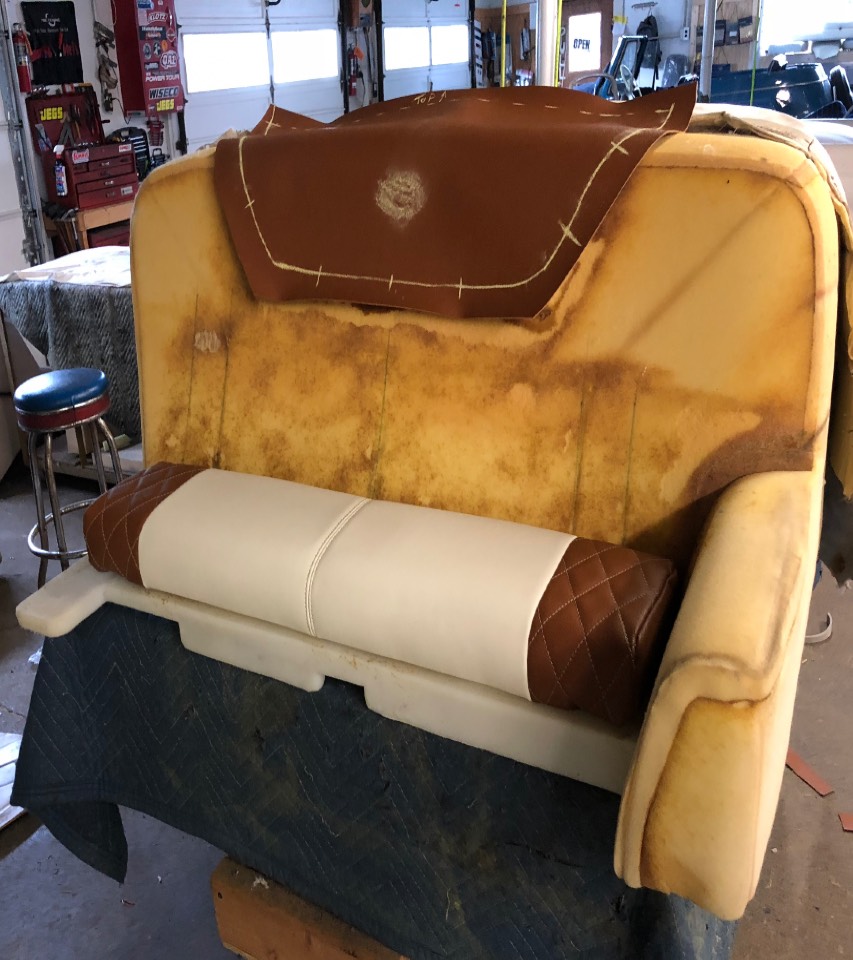Renew Your Home's Design: Upholstery Repair Solutions for every single Demand
Renew Your Home's Design: Upholstery Repair Solutions for every single Demand
Blog Article
The Ultimate Overview to Upholstery Repair Work Methods
In the world of furniture upkeep, the art of furniture repair work is a skill that can take a breath new life right into worn-out items and protect treasured belongings. Keep tuned as we decipher the intricacies of this craft and reveal the tricks to mastering upholstery repair strategies that will raise your furniture repair endeavors.
Assessing Furniture Damage
When assessing upholstery damages, it is vital to conduct a thorough evaluation to properly establish the degree of the concerns present. This preliminary action is important in creating an extensive fixing plan that attends to all aspects of the damages properly. Begin by visually examining the furniture for any visible splits, rips, spots, or staining. Make note of the place and dimension of each blemish as this information will direct the repair service procedure.
Following, assess the underlying framework of the furniture to look for any type of damage to the frame, springs, or padding. Sometimes, the damages might not be promptly noticeable on the surface area but can dramatically influence the overall stability of the upholstery. By thoroughly checking out both the exterior upholstery and internal components, you can guarantee that all concerns are recognized and properly addressed during the repair procedure.
Furthermore, consider the sort of upholstery material made use of as different fabrics and natural leathers may need certain repair strategies. upholstery repair. Comprehending the material homes will certainly help in choosing one of the most ideal fixing approaches and products to achieve ideal outcomes
Vital Tools and Products
To successfully carry out furniture repairs, having the appropriate tools and products is critical for attaining professional results. Crucial tools for furniture repair work consist of a staple gun for protecting textile, upholstery needles and string for stitching, scissors for cutting material, a rubber club for touching in furnishings components, and pliers for eliminating old staples and nails. Additionally, having a material pen for describing patterns, a seam ripper for downfall joints, and a warm glue weapon for quick solutions can be helpful. Products such as upholstery fabric, foam webbing, batting, and padding are critical for replacing damaged parts. It is additionally important to have a range of furniture adds, nails, and staples on hand for securing fabric and trim. Adhesives like material glue or spray adhesive are beneficial for specific fixings. By ensuring you have the required tools and materials before starting a furniture fixing task, you can function successfully and effectively to recover furniture to its previous magnificence.
Preparing the Furniture Surface Area
Preparation of the furniture surface is an important preliminary action in guaranteeing the successful end result of any type of upholstery repair task. Before starting any type of fixing job, it is important to completely cleanse the furnishings surface to remove dirt, dust, and any various other debris that can hinder the bond of new products. This can be done using a vacuum cleaner, a soft brush, or a wet cloth, depending on the kind of furniture and the degree of dust present.
Once the surface area is clean, any kind of damaged or loosened furniture textile, cushioning, or springtimes should be thoroughly eliminated. This action is critical to guarantee that the new materials adhere securely and that the repaired furniture preserves a expert and smooth appearance. In addition, any old staples or tacks should be drawn out, and the surface needs to be checked for any kind of structural damage that might require to be dealt with prior to proceeding with the repair.

Repairing Openings and rips
After guaranteeing the furniture surface area is free of particles, dirt, and dust and eliminating any loosened or damaged upholstery products, the following action in upholstery repair includes addressing rips and holes in the textile. Repairing splits and openings in upholstery can help expand the life of your furniture and recover its visual appeal. It is crucial to carefully match the shade and structure of the spot fabric to the initial furniture for a seamless repair work.
Getting Rid Of Discolorations and Smells
Resolving stubborn spots and lingering odors in upholstery needs a targeted and extensive strategy to ensure effective reconstruction of the fabric's appearance and freshness. Spots can be created by different substances such as food spills, pet accidents, or beverage accidents, while odors commonly stem from smoke, animal dander, or spills permeating the furniture fibers. To take on discolorations, it is essential to identify the kind of discolor initial to apply the ideal cleaning remedy. For water-based discolorations, blotting with a combination of light cleaning agent and water can be reliable, while oil-based discolorations might call for a solvent-based cleanser. Odors, on the various other hand, demand a deeper cleansing process that includes counteracting the source of the scent instead than masking it. Using sodium bicarbonate or specialized furniture deodorizers can aid remove smells properly. In many cases, professional cleaning company may be required for severe spots and smells that continue despite natural remedy. Normal upkeep and punctual interest to spills can aid in preventing deep-rooted discolorations and odors, preserving the upholstery's condition.

Verdict
Finally, understanding upholstery repair work strategies calls for careful evaluation of damages, making use of essential tools and materials, appropriate prep work of the furniture surface, and the article skillful repair service of tears, holes, smells, and stains. By following these steps, individuals can efficiently recover and extend the life of their furniture.

Essential tools for upholstery repair include a staple weapon for safeguarding material, upholstery needles and thread for sewing, scissors for cutting fabric, a rubber club for tapping in furnishings elements, and pliers for eliminating old staples and nails. By ensuring you have the essential tools and materials prior to beginning a furniture repair task, you can function efficiently and effectively to recover furniture to its previous magnificence.
Preparation websites of the furnishings surface is an essential first step in ensuring the successful outcome of any kind of upholstery fixing job.After more tips here making certain the furnishings surface area is complimentary of dust, dust, and particles and eliminating any kind of loose or broken furniture materials, the following step in furniture repair entails addressing rips and holes in the textile - upholstery repair. Fixing splits and holes in furniture can help expand the life of your furniture and recover its visual allure
Report this page